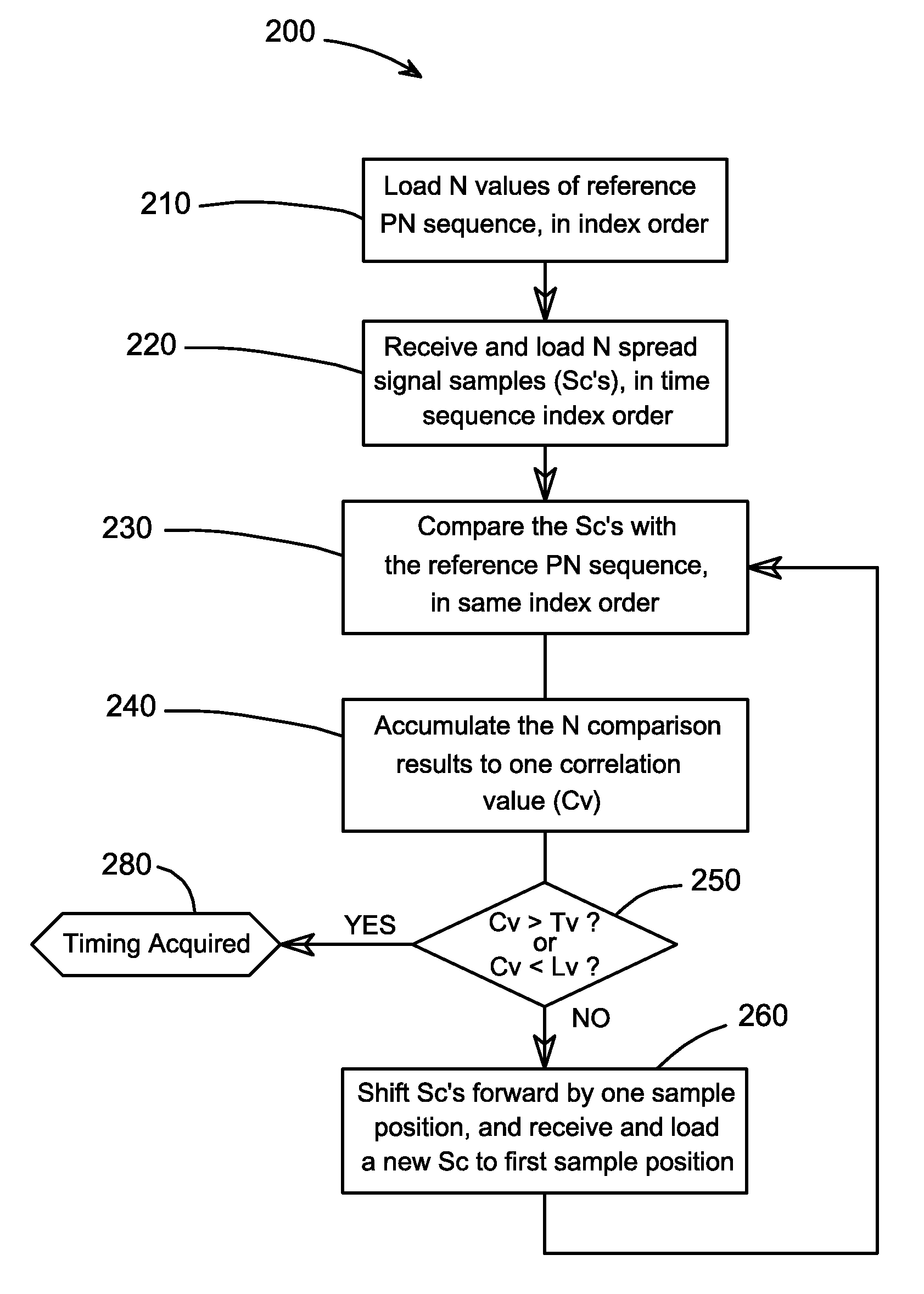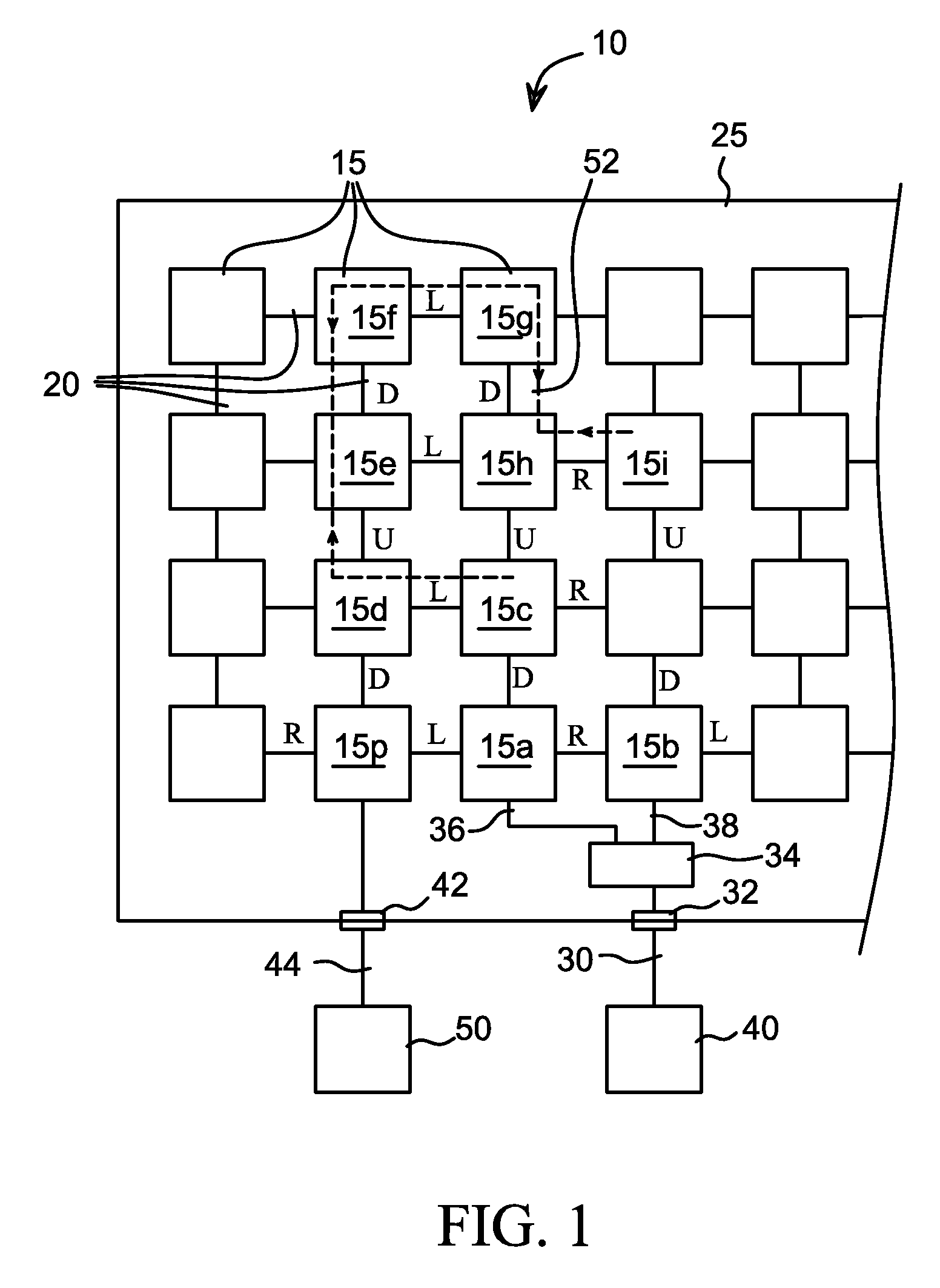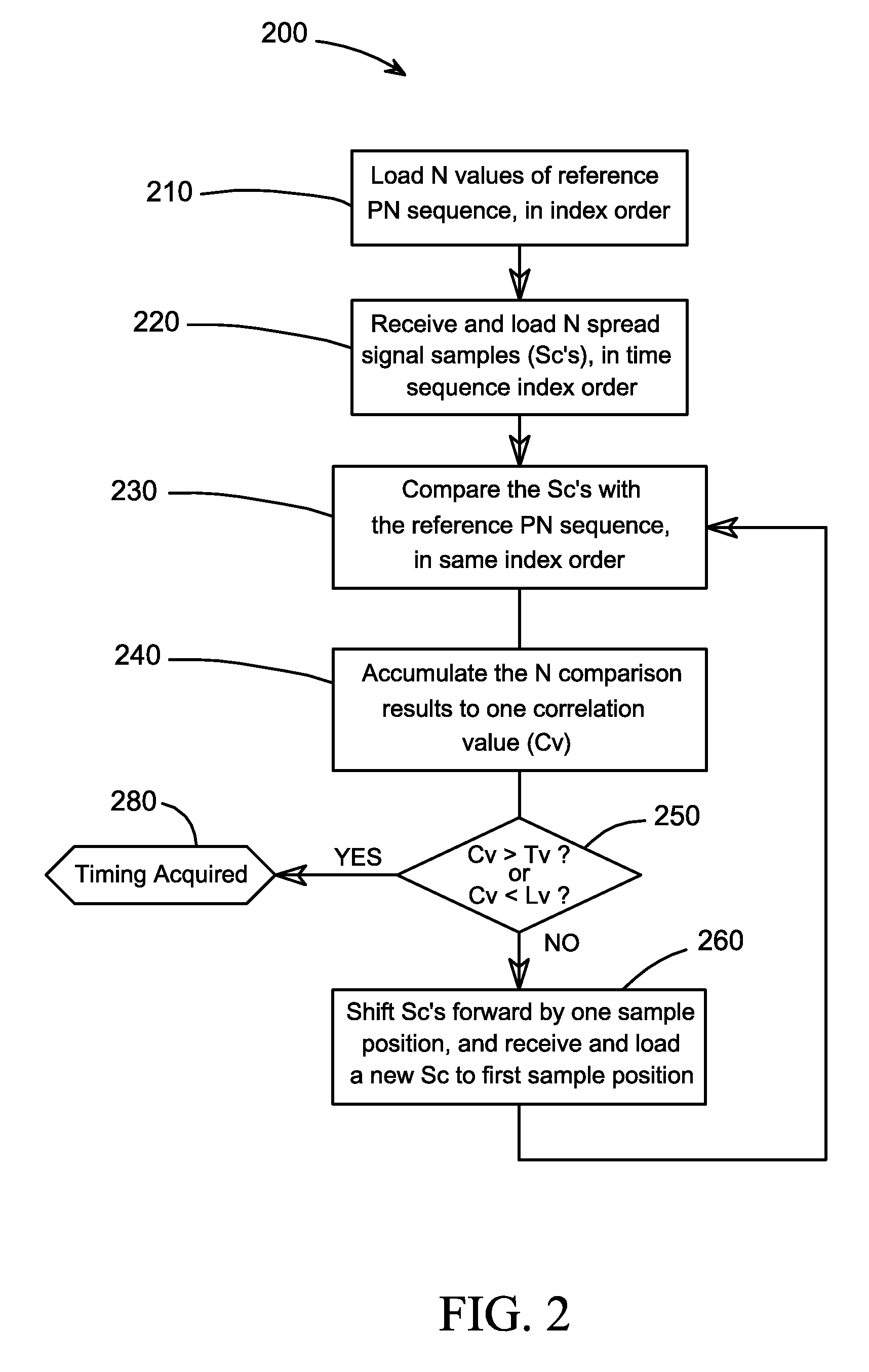Direct Sequence Spread Spectrum Correlation Method for a Multiprocessor Array
- Summary
- Abstract
- Description
- Claims
- Application Information
AI Technical Summary
Benefits of technology
Problems solved by technology
Method used
Image
Examples
first embodiment
[0021]An apparatus for carrying out the invention is an array correlator depicted in a diagrammatic view in FIG. 1 and designated therein by the general reference character 10. In a first embodiment utilizing a portion of a SEAforth® Scalable Embedded Array™ Processor, which is presently known in 24-processor and 40-processor versions, the array correlator 10 can include a plurality of general-purpose computers 15, which are located on a single die (microchip) 25, a portion of which is shown in FIG. 1. For a better understanding of the invention, it will be useful first to describe the characteristics of a SEAforth® array used in this embodiment in more detail; it should be noted, however, that the invention is not limited to implementation with a SEAforth® array, or a single die, and may be practiced with equal effect in alternate embodiments using other suitable array processors and circuits. Each of the computers 15 of a SEAforth® array is a general purpose, independently functio...
third embodiment
[0047]the method of the invention is described by a sequence of signal processing steps 400 shown in FIG. 4, in flow diagram form. In this embodiment, correlation is assessed by finding the correlation values Cv for all N possible relative phases of the received signal and the reference PN sequence (assuming that the I- and Q-components have substantially the same relative phase), both for the PN word and the conjugate PN word if desired for the application, and determining the maximum or minimum Cv value and corresponding phase (the number of Sc shifts with respect to the PN sequence) at which the maximum or minimum occurs. The branch test step 402 simply checks a shift counter value against the length N of the reference PN sequence (in this example, N=63), and other aspects of operation remain substantially the same as in the embodiments described hereinabove, wherein the input data is divided into 9-bit portions and the I-component and Q-component of each portion are concatenated...
fourth embodiment
[0052]Operation of the array correlator 10 according to the parallel acquisition or fourth embodiment, may be described by a sequence of steps 500 shown in FIG. 5, in flow diagram form. It will be further assumed here, for clarity of description, that a repeating single symbol chip sequence is received during acquisition, and that the length N of the reference PN sequence is 7 bits. In load step 510 of the operation, a reference PN sequence can be loaded from external device 50 into computer 15p, therein termed PN word, and transmitted to 7 correlation computers 15c through 15i in a rotated manner, such that 7 different shifted PN words are loaded into the data stacks (initially into T-registers and subsequently pushed into S-registers). Each of the rotated PN words is a rotated version of the reference PN sequence, rotated by one index value (bit position) with respect to the PN word in an adjacent correlation computer, starting with the unrotated PN word in computer 15c, and rotat...
PUM
 Login to View More
Login to View More Abstract
Description
Claims
Application Information
 Login to View More
Login to View More - R&D
- Intellectual Property
- Life Sciences
- Materials
- Tech Scout
- Unparalleled Data Quality
- Higher Quality Content
- 60% Fewer Hallucinations
Browse by: Latest US Patents, China's latest patents, Technical Efficacy Thesaurus, Application Domain, Technology Topic, Popular Technical Reports.
© 2025 PatSnap. All rights reserved.Legal|Privacy policy|Modern Slavery Act Transparency Statement|Sitemap|About US| Contact US: help@patsnap.com



